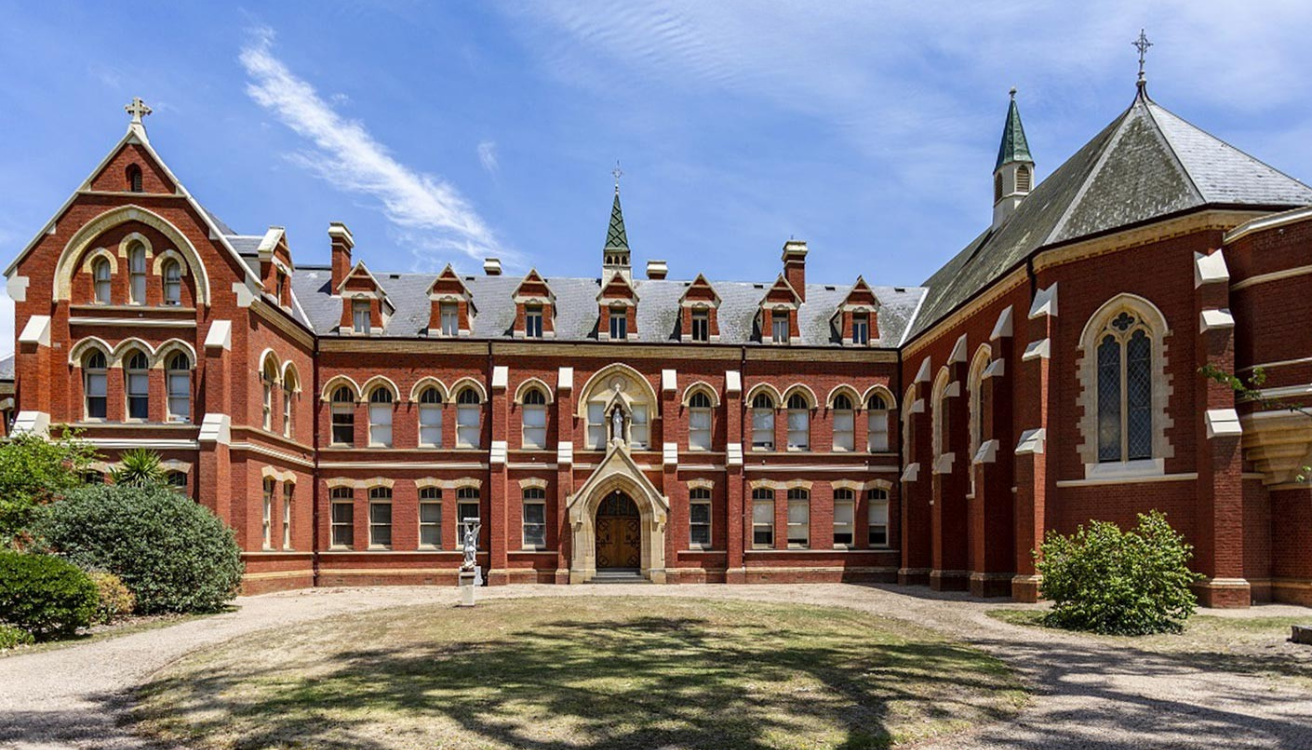
ST. THOMAS’ PRIMARY SCHOOL, SALE
Located in the Gippsland region around 2.5 hours from Melbourne’s CBD, Sale is a small town with significant history and a strong local community. Ensuring quality education for Sale’s next generation is important – and recently, UPco was pleased to work with our clients, Y2 Architecture and Diocese of Sale, to transform a much-loved local landmark into a new primary school campus.

The project in a nutshell
The Our Lady of Sion building was originally built in 1893 as a convent, but since the 1970s, it was utilised as part of the Catholic College Sale campus. In 2021, the College relocated, leaving the beautiful Victorian Gothic building vacant. Fortunately, it wasn’t long before the Diocese of Sale Catholic Education Ltd (DOSCEL) – who are now stewards of the site – announced that the site would be refurbished and repurposed to provide a new home for St Thomas’ Primary School. UPco was engaged to assist with the planning process.
The intention was to redevelop the entire site in stages to accommodate St Thomas’ growing educational needs. Given the original convent’s architectural significance, heritage was a key concern. The vision was to restore the original convent and chapel to their former glory, while demolishing the later post war buildings which had passed their ‘use by date’ to make way for contemporary learning spaces.
The process (and its challenges)
Obviously, heritage was an essential consideration. Fortunately, the Wellington Shire Council was positive about the site’s redevelopment, and had its own heritage advisor come out to visit the site. This advisor, in concert with DOSCEL’s own heritage expert, carried out a full review of the site and provided recommendations on which elements they believed should be retained and conserved (this included landscaping and trees deemed to be of heritage status). UPco then considered this information, together with the building’s statement of heritage significance and the heritage overlay that applies to the site.
There was some negotiation around what parts of the building had to be retained – and while our clients were keen to conserve as much as possible, they also understood the importance of a quality development outcome that was fit-for-purpose, and would stand the test of time. Ultimately, we reached an agreement with all parties that balanced the need to respect the past, while enabling facilities for the future. This involved restoring the convent, retaining key landscaping at the front of the site (which contributes to the overall character), building a small extension to the convent, and demolishing the surrounding mid-century buildings. The original buildings would also be brought up to contemporary accessibility standards.
These restoration works form part of stage one of the masterplan – which also includes the addition of a new ‘learning neighbourhood’ building, outdoor netball and basketball courts, on-site car parking, new entry, landscaping and signage. Stage two of the masterplan involves building a second learning neighbourhood and multi-purpose hall (this will be done down the track). One of the themes to the new masterplan is its flexibility – the two-storey learning neighbourhoods act as spaces for both students and educators, while the staged approach leaves room to adapt and grow over time.
When navigating the planning process, UPco followed a new streamlined pathway (the clause 53.19 fast track process) introduced by the State for non-Government schools in 2023. Thankfully the community was largely supportive of the project (especially as there had been a rumour the entire building would be demolished!) and there was only one traffic-related objection. We were delighted to get development approval in a relatively short time frame, and with minimal friction.
Why we love this project
Reimagining a heritage building is always a privilege. With the St Thomas’ project, we had the opportunity to help write a new chapter for a site that has been important to its community for many generations. While its purpose may have changed, continuity of its stewardship ensures that the spirit of the Sisters of Sion, who cared for their community as nuns, remains alive in the building today – albeit in a different form.
